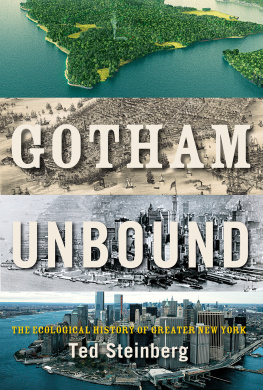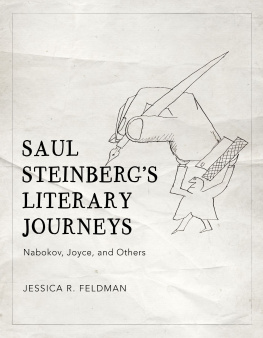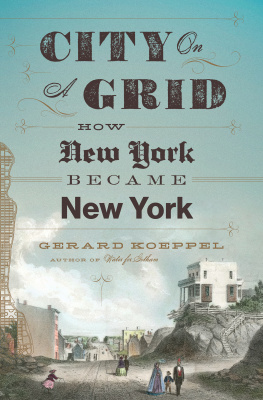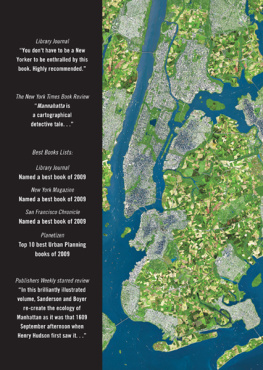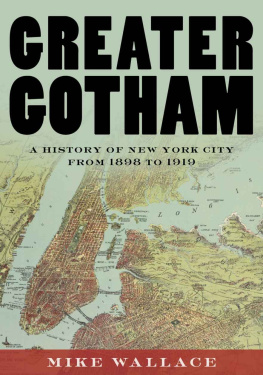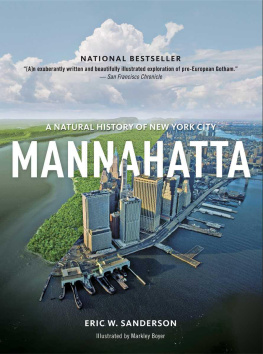Thank you for downloading this Simon & Schuster eBook.
Join our mailing list and get updates on new releases, deals, bonus content and other great books from Simon & Schuster.
C LICK H ERE T O S IGN U P
or visit us online to sign up at
eBookNews.SimonandSchuster.com
We hope you enjoyed reading this Simon & Schuster eBook.
Join our mailing list and get updates on new releases, deals, bonus content and other great books from Simon & Schuster.
C LICK H ERE T O S IGN U P
or visit us online to sign up at
eBookNews.SimonandSchuster.com
Also by Ted Steinberg
American Green: The Obsessive Quest for the Perfect Lawn
Down to Earth: Natures Role in American History
Acts of God: The Unnatural History of Natural Disaster in America
Slide Mountain, or the Folly of Owning Nature
Nature Incorporated: Industrialization and the Waters of New England

Simon & Schuster
1230 Avenue of the Americas
New York, NY 10020
www.SimonandSchuster.com
Copyright 2014 by Ted Steinberg
All rights reserved, including the right to reproduce this book or portions thereof in any form whatsoever. For information address Simon & Schuster Subsidiary Rights Department, 1230 Avenue of the Americas, New York, NY 10020.
First Simon & Schuster hardcover edition June 2014
SIMON & SCHUSTER and colophon are registered trademarks of Simon & Schuster, Inc.
The Simon & Schuster Speakers Bureau can bring authors to your live event. For more information or to book an event, contact the Simon & Schuster Speakers Bureau at 1-866-248-3049 or visit our website at www.simonspeakers.com.
Interior design by Nancy Singer
Jacket design by Michael Accordino
Jacket photographs: One World Trade Center Andrew Burton/Getty Images;
The Museum of the City of New York/Art Resource; E. L. King in Tuttlingen The Museum of the City of New York/Art Resource
Maps by Jeffrey Ward
Illustrations by Kris Tobiassen
Historical GIS Maps by Jesse Tarbert
Library of Congress Cataloging-in-Publication Data
Steinberg, Theodore. Gotham unbound : an ecological history of greater New York, from Henry Hudson to Hurricane Sandy / Ted Steinberg.
pagescm
1.Natural historyNew York (State)New York.I.Title.
QH105.N7S772014
508.747dc232013036197
ISBN 978-1-4767-4124-6
ISBN 978-1-4767-4130-7 (ebook)
For the folks at 603 East Ninety-Fourth (19401973)
Excepting Rippy
CONTENTS
New York City was the beneficiary but the victim of its geography.
Raymond Moley , 1970
INTRODUCTION
For an unparalleled nature adventure, head for the Island of Many Hills. This place lives up to its name with 573 prominences of one kind or another. But the topography is in some ways the least of the adventure. With fifty-five different ecological communities packed into just twenty-odd square miles, the island is a veritable Garden of Eden. From marine eelgrass meadow to shrub swamp, low salt marsh to brackish intertidal mudflats, blueberry bog thicket to oak-tulip forest, this spot is a living embodiment of the phrase wealth of nature. There are more than twenty ponds and over sixty miles of streams and perhaps as many as three hundred springs gurgling away. There are oysters galore. There are black bears, wolves, mountain lions, whales, and porpoises. There are red-winged blackbirds, American redstarts, red-bellied woodpeckers, clapper rails, and great horned owls. There are, in the sedge department alone, densetuft, oval-leaf, hop, broadleaf, parasol, threeway, Muhlenbergs, Schweinitzs, Pennsylvania, and hairy umbrella-sedge. This is Mannahatta: a place we are all four hundred years too late to visit.
As it turned out, this landmass on the Atlantic Coast of North America did not become a nature preserve. It emerged instead as an urban giant: the Borough of Manhattanthe heart of one of the most drastically transformed natural environments in the world. New York is the most populous city in the United States and has been for the last
This book is about the struggle between New York and the natural world. At its core, the story is about how, over centuries, people have come to understand, define, and ultimately transform New Yorks land, water, and its plant and animal life. The metropolitan area assumed its current shape by way of a set of contingent decisions. Which is precisely why we want to study its history: to understand how ecological change has made New York what it is today, while acknowledging that, present concerns aside, the past has a logic all its own. The struggle at the center of this story has been overwhelmingly one-sided; a man-bites-dog story, if you will. To cite just one measure, between 1900 and 2010, development had whittled down Staten Islands monumental 5,099 acres of marshwildlands more than a third the size of all Manhattan, filled with night herons, belted kingfishers, dragonflies, and snailsto a fractional existence the size of a mere city park (865 acres). Part of the story, too, is that sometimes the dog bit back.
To examine New York is to confront what has always beenin one form or anothera high-density place. The key to appreciating this point is to first understand that New York exists in the estuary of the Hudson River, where freshwater meets the Atlantic Ocean. Estuaries are very special environments and, from an ecological perspective, highly productive ones. They are located at the point where freshwater and salt water join together, and play a role not only as habitat for birds and other wildlife but also in the health of oceans, by filtering water and acting as nursery grounds for fish. They tend to be crammed with life. Estuaries trap nutrients from the adjoining watershed and thus are capable of supplying food to enormous populations of species, from oysters to grasses
The ecological history of New York, then, can be summed up very simply: an estuary with a high natural density was replaced by one with an astonishingly high unnatural (for lack of a better word) density. Human beings overshadow the area, but that has hardly led to the end of nature, as it were. In fact, just the reverse. Though the diversity of the plant and animal world is less encyclopedic than what it was back when Henry Hudson made his famed voyage in 1609, some speciesgulls, Phragmites (common reed), various kinds of planktonhave thrived on the disruption caused by squeezing more than 6 percent of the entire population of the nation into one small space. Those who see the swarms of people at Times Square and think New York is an exceptionally dense environment dont know the half of it.
There has been a sense that New Yorks success as a city was somehow foreordained, that the place was geographically destined for greatness. It is an old idea. Isaac Newton Phelps Stokes, the author of an epic early-twentieth-century study of Manhattan and its topography, wrote that commerce was naturally attracted to the splendid harbor. More recently, Harvard economist Edward Glaeser has offered a more sophisticated analysis. Acknowledging that Gothams rise was a multidimensional process, he nevertheless pinpointed the ramifying economic impact of the citys status as a port, which itself was based on geographic advantages such as proximity to the ocean and a location along the wide and navigable Hudson River. In this case, he writes, geography really was destiny, and the significance of trade and immigration to the early republic ensured that New York would dominate. A recent popular history echoes that conclusion: Geography would prove to be destinymore, perhaps, than in the history of any other city on earth.
Next page
